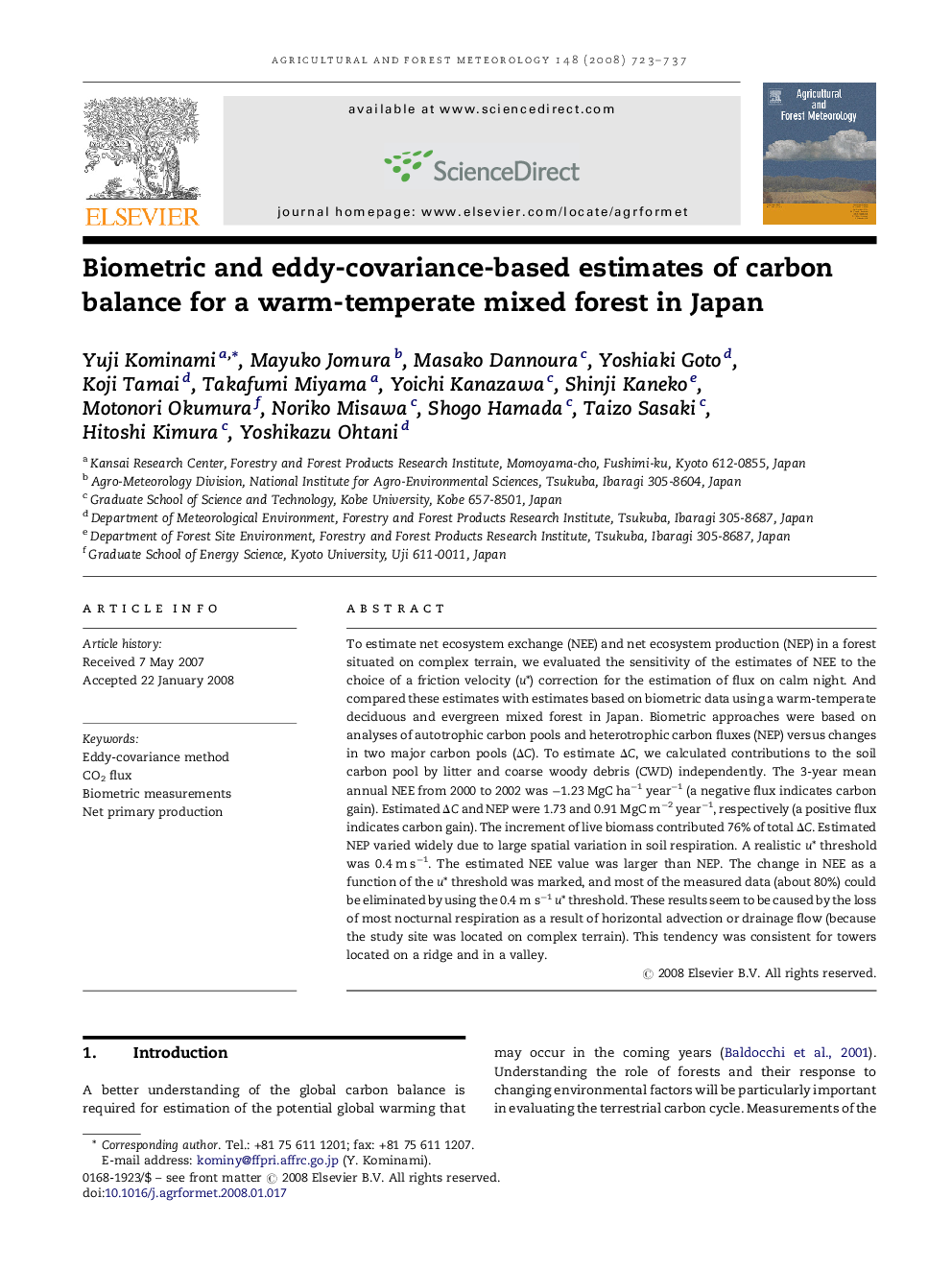| Article ID | Journal | Published Year | Pages | File Type |
|---|---|---|---|---|
| 82765 | Agricultural and Forest Meteorology | 2008 | 15 Pages |
To estimate net ecosystem exchange (NEE) and net ecosystem production (NEP) in a forest situated on complex terrain, we evaluated the sensitivity of the estimates of NEE to the choice of a friction velocity (u*) correction for the estimation of flux on calm night. And compared these estimates with estimates based on biometric data using a warm-temperate deciduous and evergreen mixed forest in Japan. Biometric approaches were based on analyses of autotrophic carbon pools and heterotrophic carbon fluxes (NEP) versus changes in two major carbon pools (ΔC). To estimate ΔC, we calculated contributions to the soil carbon pool by litter and coarse woody debris (CWD) independently. The 3-year mean annual NEE from 2000 to 2002 was −1.23 MgC ha−1 year−1 (a negative flux indicates carbon gain). Estimated ΔC and NEP were 1.73 and 0.91 MgC m−2 year−1, respectively (a positive flux indicates carbon gain). The increment of live biomass contributed 76% of total ΔC. Estimated NEP varied widely due to large spatial variation in soil respiration. A realistic u* threshold was 0.4 m s−1. The estimated NEE value was larger than NEP. The change in NEE as a function of the u* threshold was marked, and most of the measured data (about 80%) could be eliminated by using the 0.4 m s−1u* threshold. These results seem to be caused by the loss of most nocturnal respiration as a result of horizontal advection or drainage flow (because the study site was located on complex terrain). This tendency was consistent for towers located on a ridge and in a valley.
